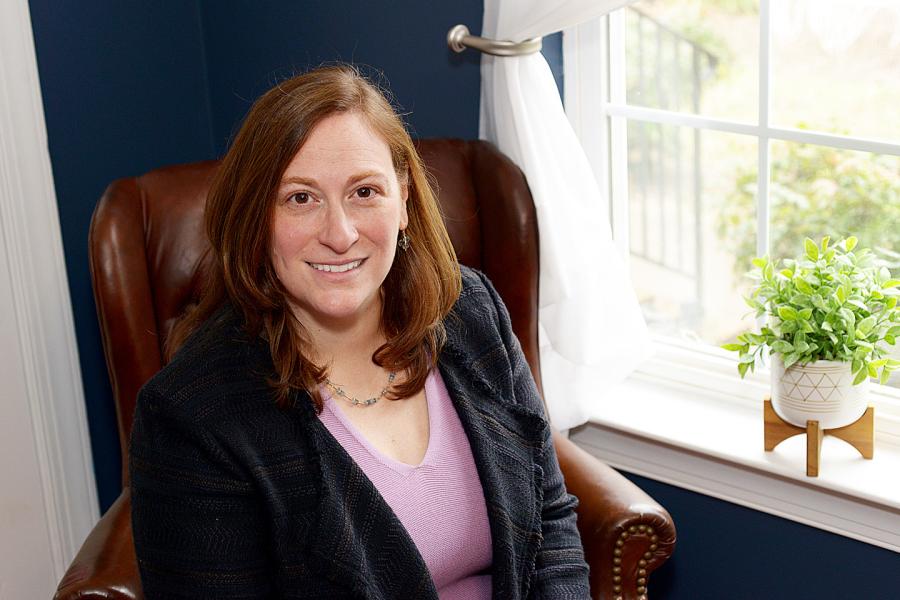When Laura DeSisto arrived in Baltimore in 2017 to lead Johns Hopkins' Master of Liberal Arts program, she was eager to embrace both the administrative and teaching aspects of the job, which would put her at the helm of the nation's oldest MLA program. With experience as a professor and an associate dean, and deep roots in the interdisciplinary approach to the study of liberal arts, she saw the job—and the program—as a perfect fit.
In the five years since, DeSisto, who is both director of the program and a senior lecturer, has helped shepherd the MLA program through a global pandemic and adapt to a changing world. This academic year it celebrates its 60-year anniversary with faculty, staff, and alumni. We talked to DeSisto to learn more about the MLA, offered through the Krieger School's Advanced Academic Programs, and her role in continuing its legacy.
First, how did you come to your role at JHU?
Prior to coming here, I was the associate academic dean for Regis College, which is the undergraduate liberal arts college within Regis University in Denver. I had to relocate to Maryland for family reasons, so I began to look in this region for similar opportunities. My heart has always been with the liberal arts, and my connection to the liberal arts has always been through interdisciplinary work. For my undergraduate degree, I went to a small liberal arts college, where I double majored in philosophy and Italian studies. I have an interdisciplinary PhD in philosophy and education, and my postdoctoral fellowship was at a small liberal arts college. So, when I saw that there was a program like this, I just thought it was a dream come true.
And what is the MLA program like? What does it seek to do for students?
When it was established in 1962, this program was the first of its kind in the United States. It was, and is, an interdisciplinary program, with courses that are very student-centered and dialogue- or question-driven. Today, our faculty primarily teach in a seminar-style, asynchronous online format, and students are given a great deal of opportunity to cultivate their voices as thinkers and scholars and to flex their intellectual muscles with a range of different assignments. So it's not a cookie-cutter program. Our approach is to make sure that our students understand the intellectual traditions and conversations that precede us, have a solid grounding in those ideas and scholarship, and think about and understand where and how to carry those forward.
How has the program changed since its founding?
In some respects, it hasn't changed very much at all. Our guiding principles and core commitments remain very much the same. One thing that has changed is that over the past six or seven years our program has transitioned into being primarily online, and that has broadened and diversified our student population. We also have continued to diversify the topics and range of the courses that we offer. That's an ongoing project—it's never going to be done—but we try to be as mindful as we can to offer courses that are representative of the full range of the human experience.
What is the MLA program's place in Baltimore, at JHU, and in the larger world?
Many alumni came from the Baltimore community and have very close and important ties to Baltimore, and that is a legacy that I take seriously. In terms of JHU, the MLA program has a long-standing history of educating Hopkins employees. We are a wonderful fit for Hopkins employees, many of whom use the university's tuition benefit, and we have had students from every part of Johns Hopkins. In terms of the larger world, we are one of the largest MLA programs in the country, and we remain actively involved with the network of other MLA programs, so we continue to be part of the broader conversation about the value and the purpose of graduate-level liberal arts study.
What do you personally hope to accomplish for the program?
I feel like I'm a steward of this program. We have a tremendous alumni community, incredible faculty—past and present—and I want to make sure that under my leadership the program continues to be healthy and thrive and grow. Along those lines, I want the program to continue to adapt and evolve to meet the needs of our student population. That means trying to stay ahead of the curve in terms of offering courses that respond to pressing issues and thinking about innovative pedagogy or other ways we can continue to be a leader in the field, setting the standard for what a Master of Liberal Arts program is supposed to be. Since stepping into my role here, I have been active in the Association of Graduate Liberal Studies Programs. In fact, in October 2022 I was named to the board, so I'm looking forward to even more involvement in and engagement with the community of MLA programs around the country.
Do you get asked, "Why study liberal arts?" and, if so, how do you answer?
Yes. In fact, part of what we do in a class that I teach is explore why that question gets asked and what assumptions people have, both in terms of the answers and in the asking. I can only speak for myself, and my point of entry is grounded in my own academic background and interest in humanism, by which I mean studying how we as human beings respond to, and make meaning out of, the world around us. There are many ways to do that, but where I have found the greatest resonance is in the intersection of the humanities, the arts, the social sciences, and, to a certain degree, the natural sciences. What I like about our approach is that we think across all those disciplinary lenses and ask the questions What does it mean to be human, to live in a world among other people, and to live on this planet responsibly?
Are those questions more relevant now than in the past? Less? What about in the future?
I would argue that there has never been a period in which those questions are not relevant. We have had many students come to the MLA program as a result of the pandemic and other world events because they felt they needed new ways to make sense of what's going on around them and to find connections to their understanding of "self" and "other," as well as their place in the world. So, I think for some there might be a heightened level of awareness concerning the relevance of the liberal arts, even while in certain segments of society the critiques continue. I think it's important to respond to those critiques through dialogue and conversation rather than just tuning them out. As for the future, the course offerings and topics may change and evolve, but I think the questions that rest at the heart of our program are still going to be questions that will be valuable and meaningful and important 60 years from now, and even beyond.
Learn more about Johns Hopkins University's tuition support for employees.
Posted in News+Info
Tagged who does that?









